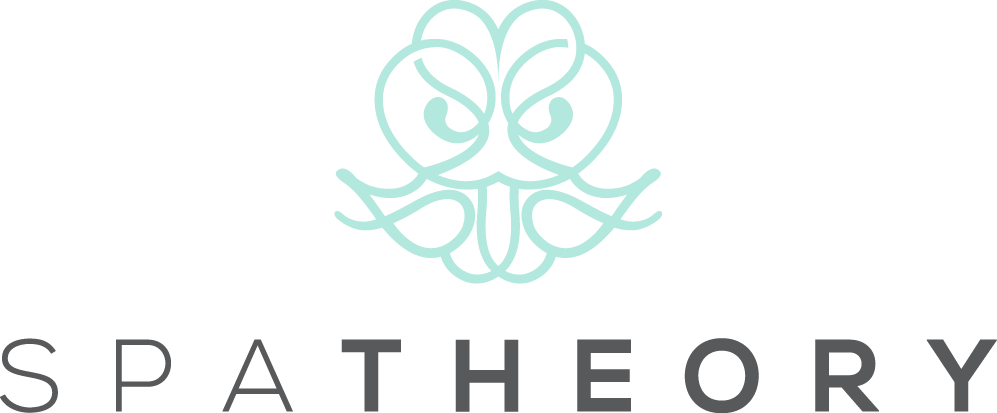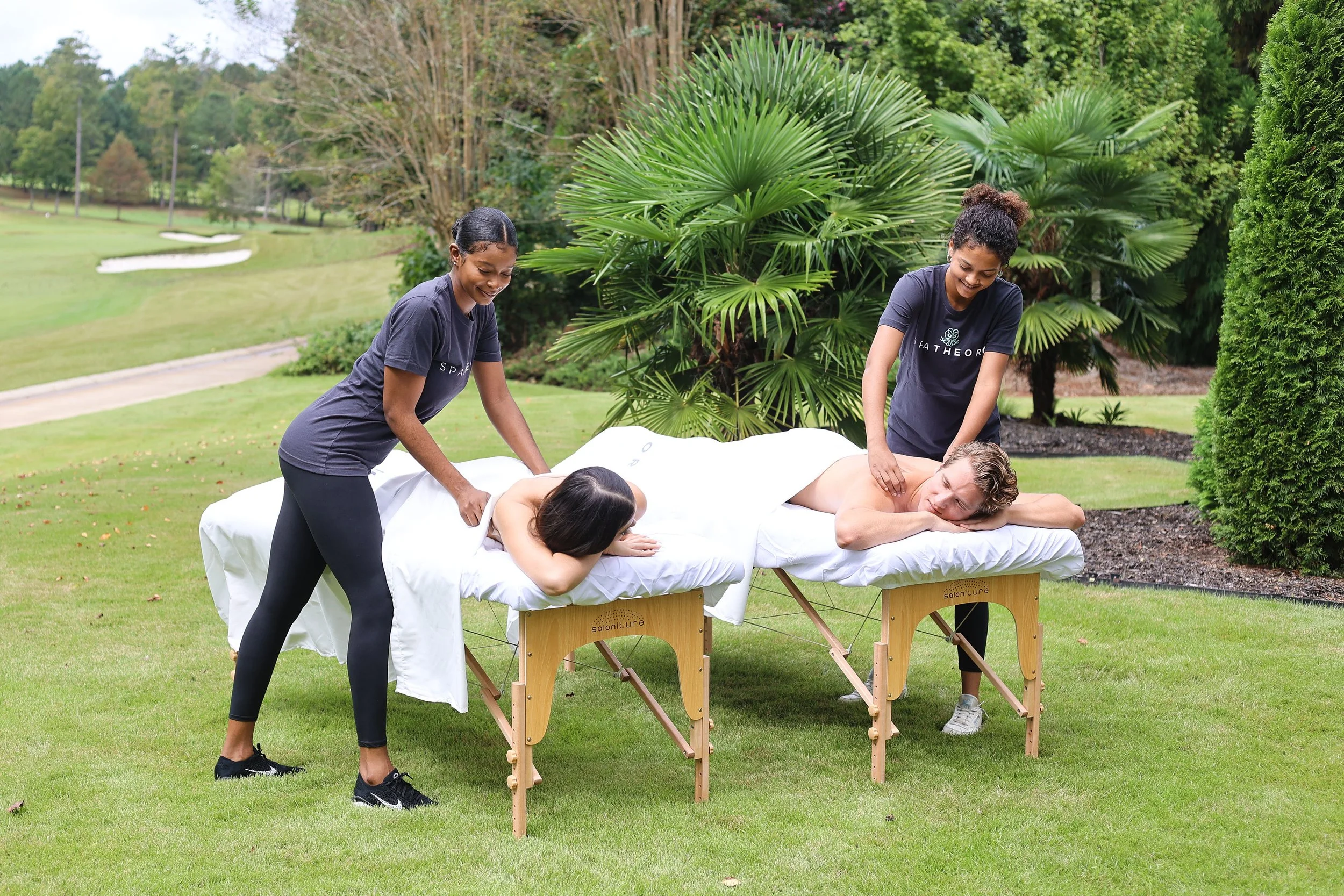Trigger Point Massage Therapy: Treat Painful Knots at Home
Feeling serious pain from long days in Miami’s traffic or seating hours before your PC? Massage triggerpoint therapy at home is the one therapy tha melts painful knots, bringing comfort, relief and ease.
With Spa Theory’s at-home massage services, you can experience professional trigger point massage therapy in the comfort of your home, tailored to melt away tension and restore your body’s balance.
In this guide, we’ll explore how to treat painful knots at home, the benefits of trigger point massage therapy, and why Spa Theory’s membership is your ticket to effortless, ongoing relief.
What Are Trigger Points?
Trigger points are tight, sensitive spots in your muscles, which are known as “knots” that cause pain, stiffness, or discomfort. According to the America Institute of Alternative Medicine, these knots are hypersensitive spots caused by both physical and emotional factors. These bands form when muscle fibers stay contracted, limiting blood flow and causing oxygen deprivation. This would later result in pain that can diffuse to other areas, like a shoulder knot triggering headaches or neck tension.
Common causes of trigger points include:
Poor posture: Slouching at your desk or hunching over your phone.
Stress: Tense muscles from high-pressure workdays or busy family life.
Overuse or injury: Repetitive motions, like typing or lifting, strain muscles.
Inactivity: Prolonged sitting, especially for Houston’s busy professionals or Miami’s on-the-go parents.
Understanding these culprits empowers you to take control of your pain with targeted trigger point therapy.
How Does Trigger Point Massage Work?
Trigger point massage therapy focuses on releasing these knots by applying precise pressure to the affected area. This technique restores blood flow, flushes out waste products, and allows muscles to relax. Unlike deep tissue massage, which targets broader muscle groups, trigger point therapy hones in on specific knots for faster, more effective relief.
Here’s how it works:
Locate the knot: A therapist palpates the muscle to find taut bands or small, tender spots.
Apply pressure: Using fingers, elbows, or tools like a trigger point massage ball, pressure is applied at a moderate intensity (about a 7/10 on the pain scale).
Hold and breathe: The pressure is held for 6–10 seconds while you take deep breaths, helping the muscle release.
Repeat and stretch: Gentle stretching and light massage follow to promote blood flow and prevent re-tightening.
Benefits of Trigger Point Massage
Why choose trigger point massage therapy? Here are the top benefits:
Fast pain relief: Targets the root cause of muscle pain, reducing discomfort in minutes.
Improved mobility: Releases tension to restore range of motion, perfect for athletes or desk workers.
Reduced referred pain: Eases secondary pain, like headaches from neck knots or sciatica from piriformis trigger points.
Stress reduction: Promotes relaxation, helping busy moms in Houston or professionals in Miami unwind.
Customizable at home: With Spa Theory, enjoy tailored sessions in your living room, no spa commute required.
Whether you’re dealing with neck massage trigger points, shoulder trigger point massage, or sciatica trigger point massage, this therapy delivers results.
How to Treat Trigger Points at Home
While professional therapy is ideal, you can manage trigger points at home with the right tools and techniques. Here’s a step-by-step guide:
Identify the trigger point: Gently press on sore areas to find a taut band or knot. Common spots include the upper trapezius (shoulders), neck, or lower back.
Use a trigger point tool: A trigger point massage ball, massage gun, or trigger point massager stick works well. For example, a trigger point massage roller is great for larger areas like the back.
Apply moderate pressure: Press on the knot at a 7/10 intensity. Hold for 6–10 seconds, breathing deeply.
Check for referred pain: If pain radiates (e.g., to your head or jaw), you’ve likely found an active trigger point.
Stretch and hydrate: After release, gently stretch the area and drink water to flush out toxins.
For best results, book a Spa Theory therapist for an at-home trigger point massage session. At Spatheory, we are a mobile massage service providing you the best stress relief you could ever think of right in the comfort of your home, office or hotel.
What about Myofascial Release Massage Therapy
According to a review by the National Library of Medicine, Myofascial Release (MFR) therapy is commonly applied in clinical settings to manage a range of musculoskeletal disorders and pain-related issues.
Myofascial release massage therapy is a hands-on technique that focuses on relieving tension in the fascia, the thin, connective tissue that surrounds and supports your muscles, organs, and bones.
Think of fascia like a web that holds everything in place but can become tight or restricted due to stress, injury, or poor posture. This tightness can lead to pain, stiffness, or limited movement. Myofascial release uses gentle, sustained pressure and stretching to loosen these restrictions, allowing the fascia to relax and improve flexibility.
Unlike other massages that target muscles directly, this therapy works on the broader fascial network to promote whole-body alignment and ease discomfort, making it ideal for chronic pain or conditions like fibromyalgia.
Differences Between Trigger Point and Myofascial Release Massage Therapy
While myofascial release massage therapy offers a gentle, holistic approach to easing tension across your body’s fascial network, you might wonder how it compares to other targeted techniques like trigger point massage.
Both methods aim to relieve pain and restore mobility, but they tackle different issues in distinct ways. Understanding the differences between trigger point therapy and myofascial release can help you choose the best option for your specific needs, whether you’re dealing with localized knots or widespread tightness.
Trigger Point Therapy: Targets specific knots with sustained pressure to release tension and referred pain.
Myofascial Release: Focuses on broader fascial tissue, using gentle, sustained stretching to improve flexibility and reduce tightness.
For localized pain like fibromyalgia trigger points or tennis elbow trigger point massage, trigger point therapy is more effective.
Why Choose Spa Theory’s At-Home Massage?
Spa Theory brings luxury, convenience, and professionalism to your home, especially for busy folks in cities like Miami or Houston. Here’s why our service stands out:
Effortless booking: Schedule a session in minutes via our app or website, available every day.
Expert therapists: Our licensed professionals specialize in deep tissue trigger point massage, sports massage trigger points, and more.
Flexible locations: Whether you’re in Miami’s humid heat or Houston’s bustling suburbs, we come to you.
Tailored experience: From trigger point massage for shoulder pain to piriformis trigger point massage, we customize each session.
Join our $119/month membership for unlimited access to at-home massages, exclusive discounts on premium services, and priority booking. Say goodbye to painful knots and hello to effortless relief—sign up today at Spa Theory
FAQs
Is it good to massage trigger points?
Yes, massaging trigger points relieves pain, improves mobility, and reduces referred pain like headaches or sciatica. Professional sessions, like those from Spa Theory, ensure safe, effective results.
What happens when a trigger point is released?
When a trigger point releases, the muscle relaxes, blood flow improves, and pain decreases. You may feel a “twitch” response as the knot softens, followed by immediate relief.
What are the three types of trigger points?
Active: Cause pain even at rest and may refer pain elsewhere.
Latent: Only painful when pressed, often unnoticed until activated.
Satellite: Develop in areas affected by referred pain from primary trigger points.
How to do trigger point massage at home?
Use a trigger point massage tool like a ball or roller, apply moderate pressure to the knot for 6–10 seconds, breathe deeply, and stretch afterward. For best results, consult a Spa Theory massage therapist.
What is the fastest way to release trigger points?
The fastest way is professional trigger point massage therapy with sustained pressure and stretching, as offered by Spa Theory’s at-home service. At-home tools like a trigger point massage gun can also help.

